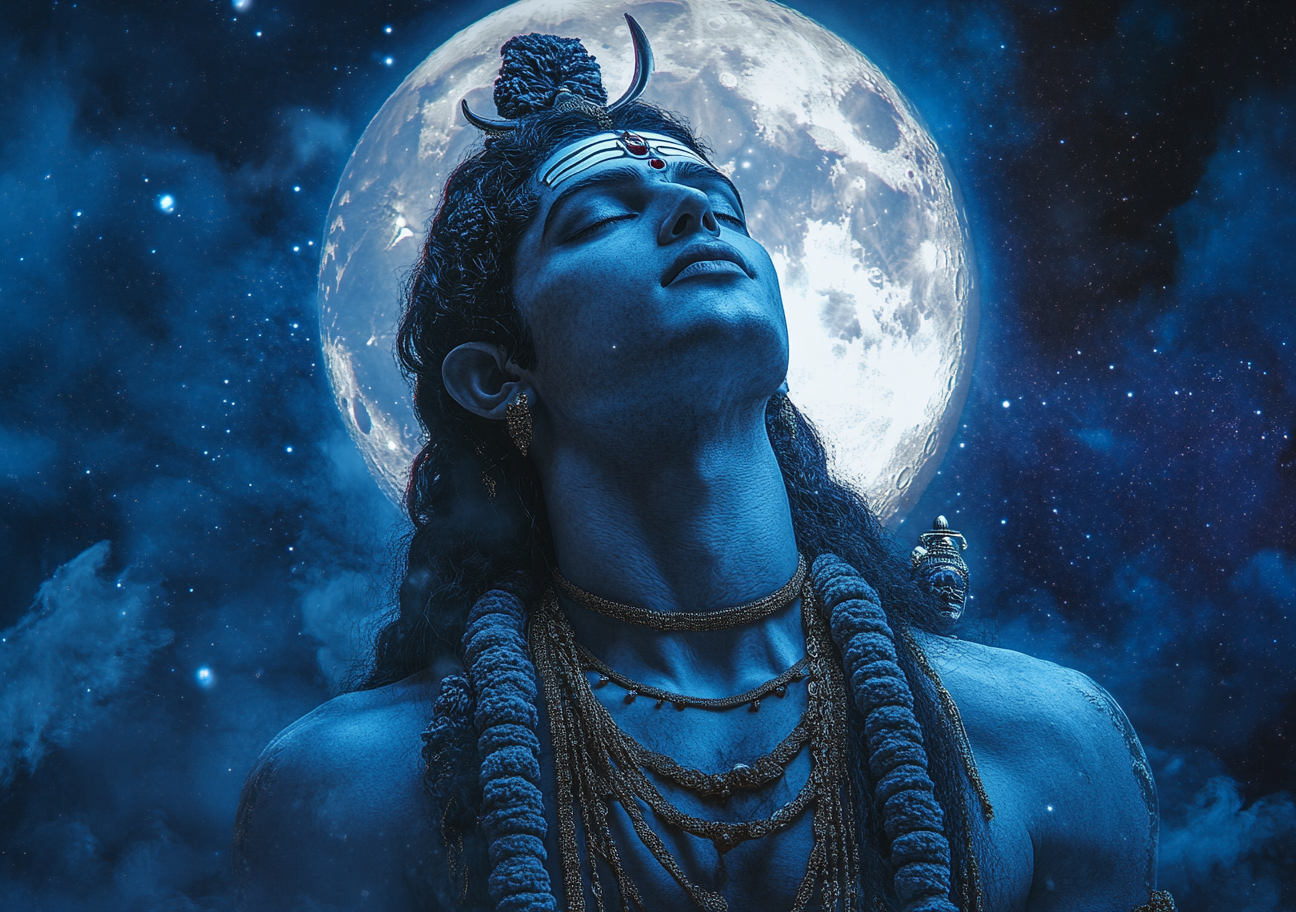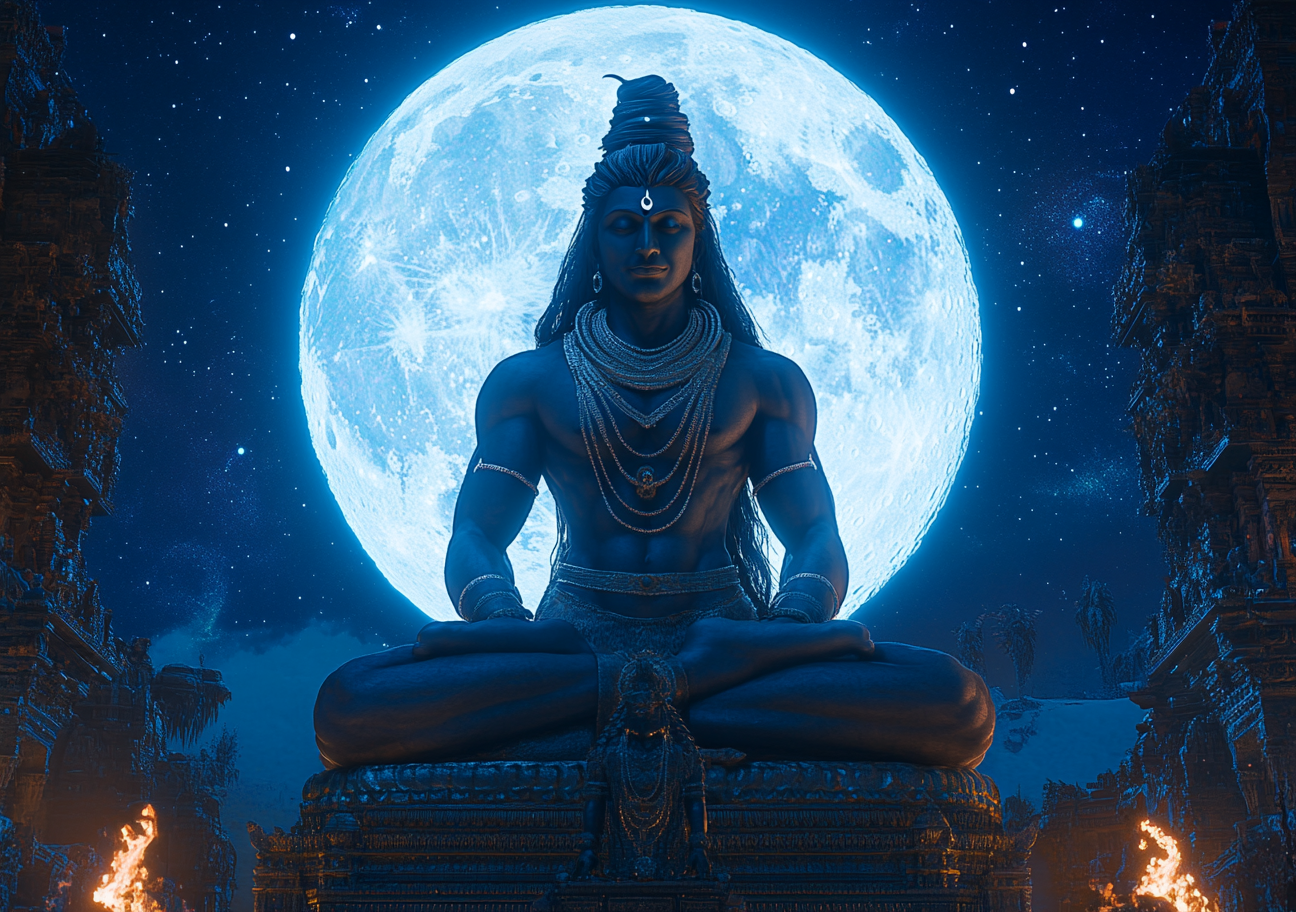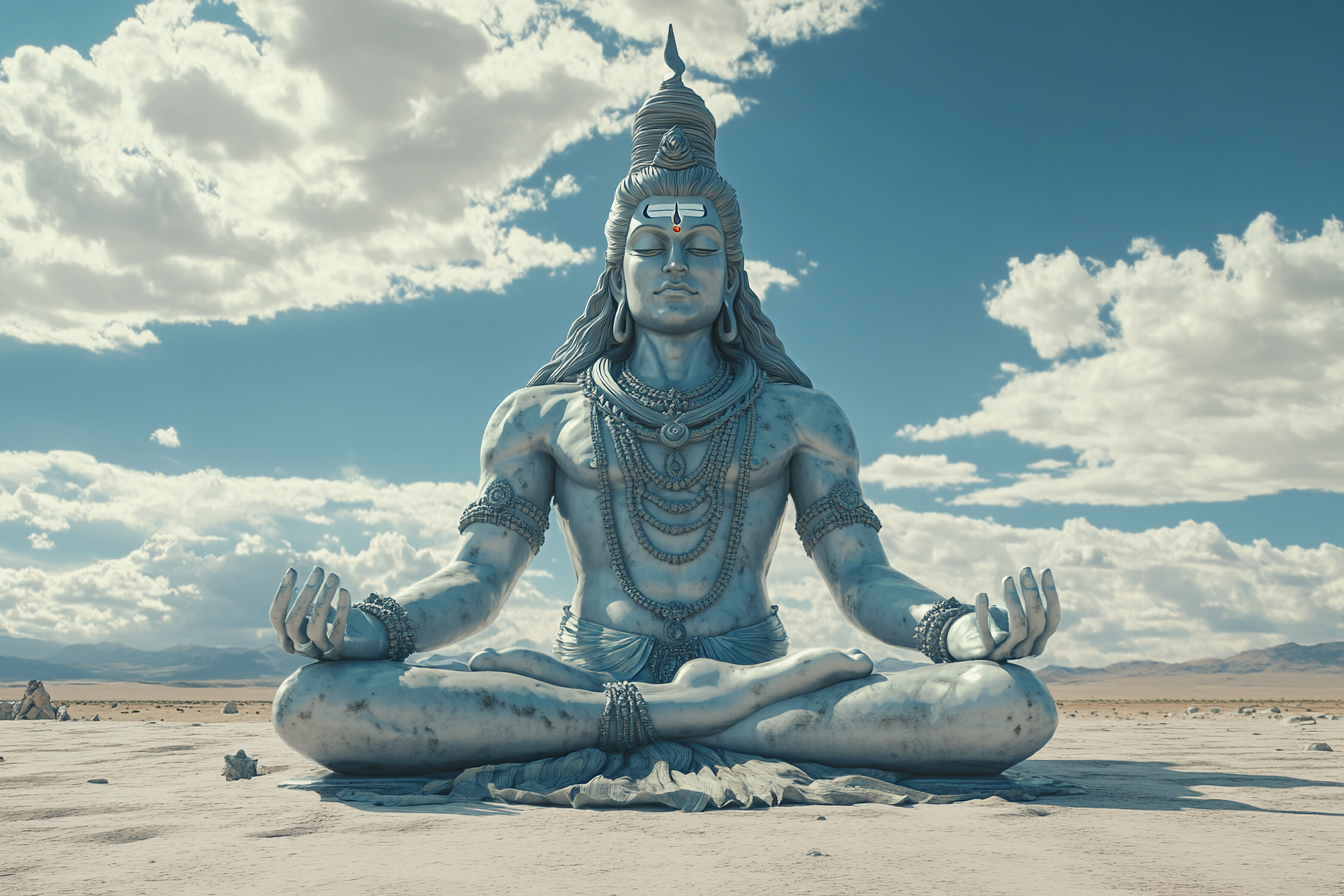Lord Shiva is often depicted as a meditating ascetic atop Mount Kailash. His third eye radiates wisdom, and his trident symbolizes the power to destroy evil. He is a key deity in Hinduism, part of the Trimurti with Brahma and Vishnu. Shiva, the destroyer and transformer, is revered for his boundless energy and role in creation and destruction. But, who are Lord Shiva’s parents? This question has intrigued devotees and scholars for centuries.
Exploring the sacred texts, I found that Shiva’s origins are complex. Unlike many deities, Shiva’s existence transcends birth and lineage. He is described as "Anadi" (without beginning) and "Anant" (without end). This means he has no origin or conclusion. Yet, the Puranas and other holy books offer fascinating stories and symbolic interpretations.

The Concept of Anadi and Anant
My search for answers about Lord Shiva’s parents led me to "Anadi" and "Anant." These words, found in the Shiva Purana, reveal Shiva’s true nature. "Anadi" means without beginning, and "Anant" means without end. Shiva is eternal, infinite, and beyond birth and death.
Reading this in the Shiva Purana was both profound and puzzling. How can someone have no beginning? The scriptures tell us that Shiva is not born from anyone. He simply is. This makes the question of his parents deeply philosophical.
Shiva’s existence challenges our understanding of life and creation. He is not bound by the universe's rules. He is the rule, the source, and the essence all at once.
This concept of being "Anadi" and "Anant" sets Shiva apart. While gods like Brahma and Vishnu have roles, Shiva exists beyond these. He is the silent observer, dissolving the universe to reborn it again. Despite this truth, the Puranas hint at Shiva’s symbolic parentage. These stories are metaphors to understand the divine in human terms.
The Story of Brahma and Vishnu Searching for Shiva's Origin
The tale of Brahma and Vishnu’s search for Shiva’s beginning is captivating. This story, found in the Shiva Purana, highlights Shiva’s infinite nature. It leaves us in awe of his divine mystery.
It all begins with Brahma, the creator, and Vishnu, the preserver, in a heated debate. Each believed they were the supreme force in the universe. Brahma argued that without creation, nothing could exist. Vishnu countered that without preservation, creation would collapse into chaos. Their debate grew so intense that it seemed there would be no resolution.
Suddenly, a massive, radiant pillar of light appeared before them. It was unlike anything they had ever seen—endless, boundless, and blazing with an energy that seemed to pierce through the very fabric of existence. This pillar was none other than Lord Shiva, manifesting in the form of a Jyotirlinga, a symbol of his infinite power.
Curious and determined, Brahma and Vishnu decided to find the ends of this pillar. Brahma, taking the form of a swan, soared upward, while Vishnu, transforming into a boar, burrowed downward. For what felt like an eternity, they searched tirelessly. Brahma flew higher and higher, but the top of the pillar remained out of reach. Vishnu dug deeper and deeper, yet the bottom seemed to elude him.
Exhausted and humbled, they returned to where they had started. It was then that Shiva revealed himself in his full glory, emerging from the Jyotirlinga. He explained that the pillar of light was a manifestation of his infinite nature—a reminder that he is beyond the comprehension of even the greatest deities. Brahma and Vishnu bowed before him, acknowledging his supremacy.
This story, as I reflected on it, carries a profound message. Shiva’s form as the Jyotirlinga symbolizes his self-manifested nature. He is "Swayambhu," meaning he exists by his own will, without any origin or creator. The fact that even Brahma and Vishnu, two of the most powerful beings in the universe, could not find his beginning or end, highlights the idea that Shiva is beyond the limits of time, space, and human understanding.
As I delved deeper into the ancient scriptures, I discovered that the question of Lord Shiva’s parents is not as straightforward as it seems. Different Puranas offer varying perspectives, each adding a unique layer to the mystery. Let me take you through these fascinating accounts, one by one.
Different Perspectives
Lord Brahma as the Father
In some Puranas, Lord Brahma, the creator of the universe, is considered Shiva’s father. At first, this idea seemed surprising to me. How could Brahma, who is often depicted as being born from a lotus emerging from Lord Vishnu’s navel, be the father of Shiva? But as I read further, I realized that this relationship is not biological. Instead, it is rooted in cosmic forces.
The concept of Hiranyagarbha, the cosmic egg, plays a key role here. According to these texts, Brahma emerged from Hiranyagarbha, the golden womb of creation, and Shiva manifested through Brahma’s divine energy. This makes Brahma Shiva’s father in a symbolic sense, representing the cycle of creation and the interconnectedness of the Trimurti—Brahma (creation), Vishnu (preservation), and Shiva (destruction). It’s a reminder that the divine forces of the universe are deeply intertwined.
Lord Sadashiv (Brahm Kaal) as the Father
Another intriguing perspective comes from the Shiv Purana, specificallly the Vidhweshwar Samhita, Chapter 10. Here, it is said that Lord Sadashiv, also known as Brahm or Kaal, is Shiva’s father. This was a revelation to me. Sadashiv is described as the supreme, formless reality, beyond even the Trimurti. In this account, Sadashiv appears before Brahma and Vishnu and addresses them as his children, establishing his role as the ultimate source of all creation.
This perspective suggests that Shiva, despite being eternal and infinite in many texts, has a birth in this particular narrative. It adds a layer of complexity to Shiva’s identity, showing that even the most profound truths in Hindu mythology can have multiple interpretations.

Who is the Mother of Lord Shiva?
Now, let’s turn to the question of Shiva’s mother. Just as with his father, the answer is layered with symbolism and divine meaning.
Goddess Parvati as the Mother
In many traditions, Goddess Parvati, also known as Shakti or Devi, is considered Shiva’s mother. At first, this seemed contradictory to me because Parvati is also known as Shiva’s consort. How can she be both his wife and his mother? But as I explored further, I realized that this duality is a reflection of the divine balance between masculine and feminine energies.
Parvati, as Prakriti (nature), is the mother of all creation. She embodies the nurturing, creative force of the universe. In this role, she is seen as the mother of Shiva, Brahma, Vishnu, and all existence. This idea beautifully illustrates the interconnectedness of the divine forces, where Shakti (feminine energy) and Shiva (masculine energy) are two halves of the same cosmic whole.
Goddess Durga as the Mother
Another perspective comes from the Srimad Devi Bhagwat Purana, which states that Goddess Durga, another form of Shakti, is the mother of Shiva, Brahma, and Vishnu. This text describes Durga as Prakriti, the primordial energy from which all creation emerges. It resonated with me when I read the Srimad Bhagavad Gita, Chapter 14, verses 3 to 5, where it is explained that the three Gunas—Rajas (activity), Sattva (purity), and Tamas (inertia)—originate from Prakriti. This reinforces the idea that Durga, as Prakriti, is the source of all cosmic forces, including Shiva.
Bringing It All Together
As I pieced together these stories, I realized that the question of Shiva’s parents is not about finding a literal answer but about understanding the deeper symbolism behind these narratives. Whether it’s Brahma as the cosmic father, Sadashiv as the supreme source, Parvati as the nurturing mother, or Durga as the primordial energy, each story offers a unique perspective on the divine.
What struck me most is how these accounts highlight the interconnectedness of the universe. Shiva, Brahma, Vishnu, Parvati, and Durga are not separate entities but different manifestations of the same cosmic truth. They remind us that the divine is beyond human concepts of birth, lineage, and relationships. It is infinite, eternal, and ever-present.

Conclusion
So, who are Lord Shiva’s parents? Perhaps the answer lies not in finding a definitive answer but in embracing the mystery. Shiva is the beginning and the end, the creator and the destroyer, the child and the parent. He is the infinite light that illuminates the cosmos, and in seeking to understand him, we come closer to understanding the very essence of existence.
If you feel inspired to invite Lord Shiva’s blessings into your life, why not bring home a piece of this divine energy? At Dev Tattva, we offer exquisitely crafted Shiva Idols for your car dashboard, home, office, or temple. Each idol is made with devotion and care, designed to help you stay connected to Shiva’s eternal presence wherever you go. Whether you’re seeking peace, protection, or spiritual growth, our idols serve as a constant reminder of Shiva’s infinite power and grace.
Take the next step in your spiritual journey today. Discover our selection of Shiva Idols and find the ideal one to accompany you: Shiva Idols by Dev Tattva. May Shiva's blessings bring peace, strength, and divine energy into your life.
As I conclude this exploration, a thought lingers: sometimes, the most profound truths are found in the questions we pose, not the answers we seek. The question of Lord Shiva's parents invites us to transcend the mundane, to embrace the infinite, and to be awed by the divine enigma that is Shiva.
Our latest content
Check out what's new in our company !
Who is Lord Shiva's Father and Mother?